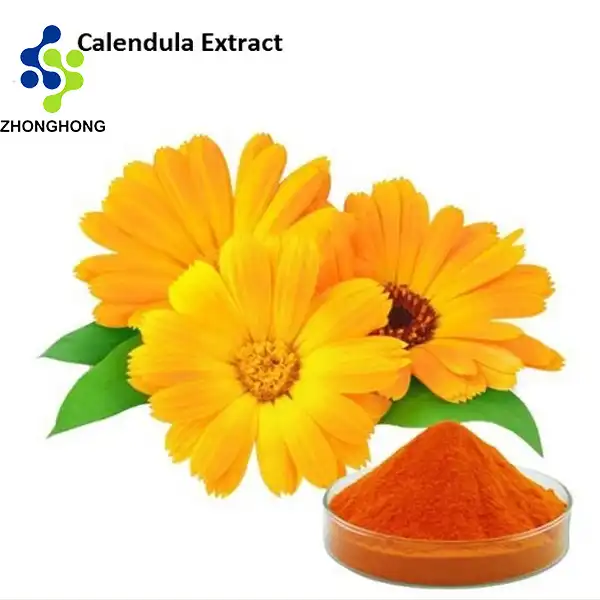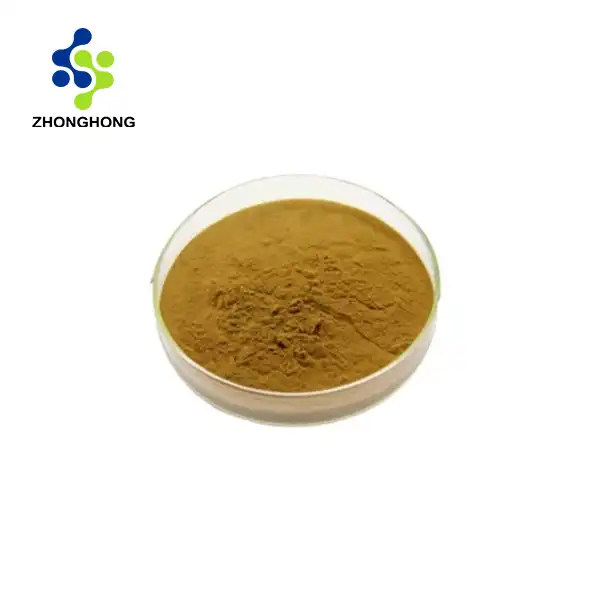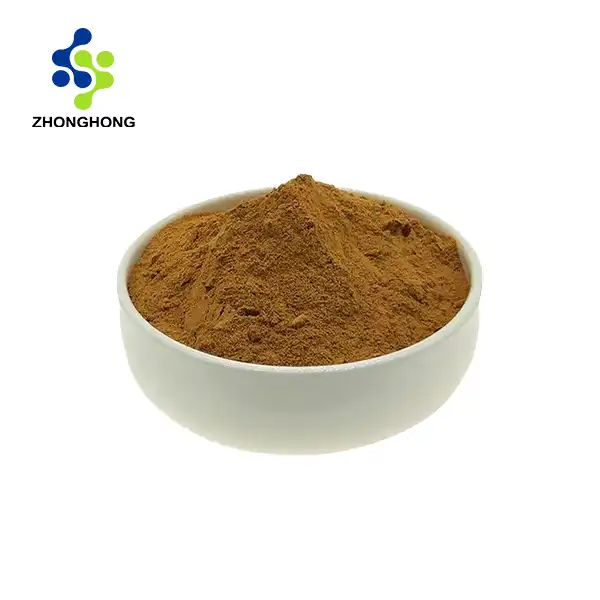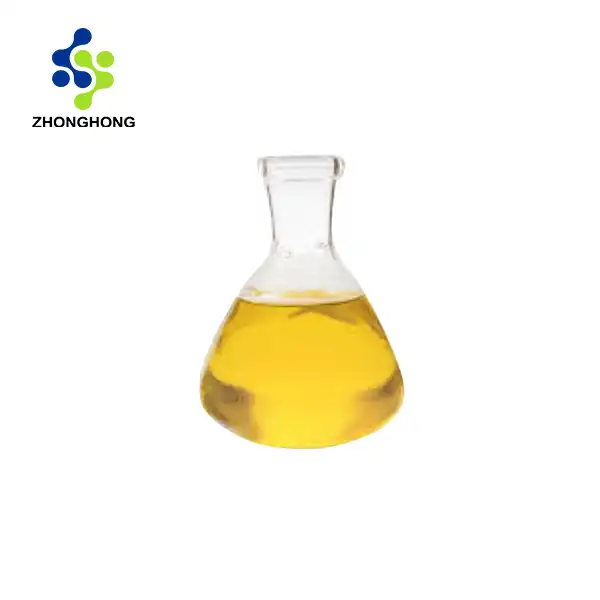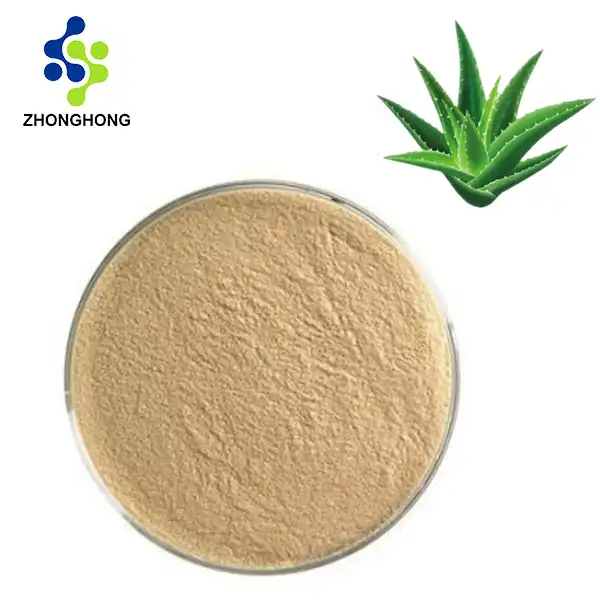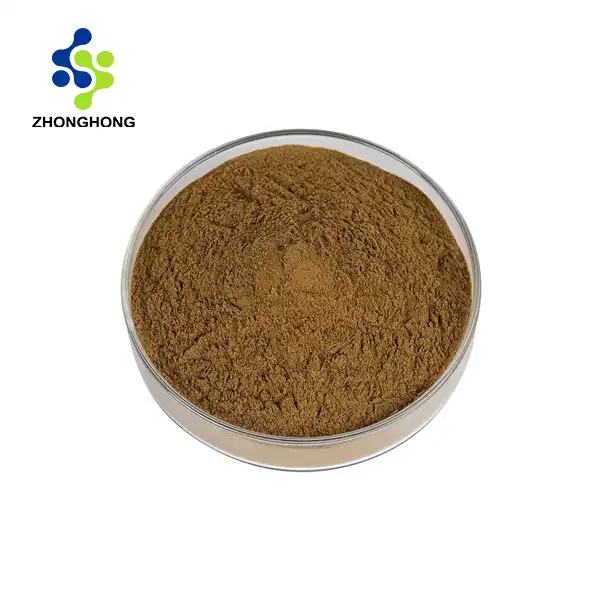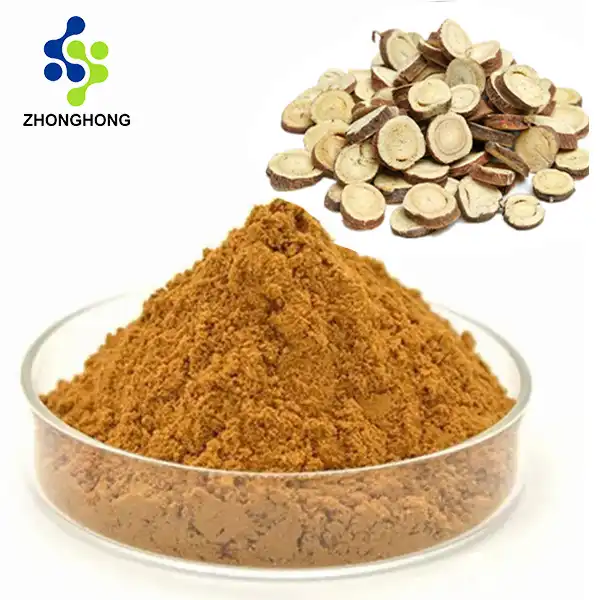Understanding Kojic Acid Powder and Its Properties
Chemical Structure and Composition
Kojic acid powder, a natural compound derived from various fungi species, possesses a unique chemical structure that contributes to its diverse applications. Its molecular formula, C6H6O4, reveals a simple yet powerful arrangement of carbon, hydrogen, and oxygen atoms. This organic acid features a γ-pyrone ring structure, which plays a crucial role in its ability to inhibit tyrosinase, the enzyme responsible for melanin production. The presence of hydroxyl groups in its structure enhances its solubility in polar solvents, while also contributing to its antioxidant properties. Understanding these fundamental aspects of kojic acid's composition is essential for effectively incorporating it into various formulations, particularly when attempting to dissolve it in oil-based mediums.
Solubility Characteristics
The solubility characteristics of kojic acid powder are pivotal in determining the most effective methods for its incorporation into different formulations. While kojic acid exhibits good solubility in water and polar organic solvents like ethanol and propylene glycol, its solubility in oils presents a more complex challenge. The compound's hydrophilic nature, attributed to its hydroxyl groups, makes it inherently less soluble in non-polar substances like oils. However, this doesn't render oil-based solutions impossible. The key lies in understanding the factors that influence solubility, such as temperature, pH, and the presence of co-solvents or emulsifiers. By manipulating these variables, it's possible to enhance the dispersion of kojic acid in oil, creating stable and effective formulations for various applications in cosmetics, pharmaceuticals, and food industries.
Stability Considerations
When working with kojic acid powder, particularly in oil-based formulations, stability considerations are paramount. Kojic acid is known for its sensitivity to light, heat, and certain pH conditions, which can lead to degradation and loss of efficacy. In oil solutions, these stability issues can be exacerbated due to the limited protective environment compared to aqueous systems. To maintain the integrity of kojic acid in oil, it's crucial to implement proper storage conditions, including protection from light and heat. Additionally, the use of antioxidants and chelating agents can help prevent oxidation and maintain the stability of the compound. Understanding the stability profile of kojic acid in different oil types is essential for developing products with consistent quality and effectiveness. Formulators must also consider the potential interactions between kojic acid and other ingredients in the oil-based formulation to ensure long-term stability and efficacy.
Techniques for Dissolving Kojic Acid Powder in Oil
Heating Method
One of the best methods for dissolving powdered kojic acid in oil is the heating approach. This method makes use of the idea that many elements become more soluble at higher temperatures. It is essential to heat the oil gradually meanwhile using this procedure, usually to a temperature of 40–50°C (104–122°F). This temperature range is adequate to increase solubility without running the danger of kojic acid breakdown. The most effective technique to achieve accurate temperature control is using a double boiler system. Add tiny amounts of kojic acid powder gradually while swirling constantly once the oil reaches an acceptable temperature. By dissolving the intermolecular interactions between the kojic acid molecules, the heating forward facilitates their more simple dispersion in the oil. But it's crucial to keep a close eye on the temperature since too much heat can cause the kojic acid to break down and lose its effectiveness. Allow the mixture to cool steadily until it is entirely dissolved, stirring perpetually to keep the solution stable.
Ultrasonic Dispersion
Ultrasonic dispersion offers a sophisticated approach to dissolving kojic acid powder in oil, particularly useful for achieving fine and uniform dispersion. This method utilizes high-frequency sound waves to create cavitation bubbles in the liquid, which upon collapse, generate intense local heating and high-pressure shock waves. These phenomena help to break down kojic acid particles and disperse them evenly throughout the oil. To employ this technique, the kojic acid powder is first added to the oil, and the mixture is then subjected to ultrasonic treatment. The duration and intensity of the ultrasonic waves can be adjusted based on the specific oil and desired concentration of kojic acid. This method is particularly advantageous for creating stable nano-dispersions, which can enhance the bioavailability and efficacy of kojic acid in various applications. Moreover, ultrasonic dispersion often allows for dissolution at lower temperatures compared to traditional heating methods, potentially preserving the integrity of heat-sensitive components in the formulation.
Emulsification Techniques
Emulsification procedures provide a novel way to include kojic acid powder into oil-based lyrics when direct dissolving is challenging. To make a stable emulsion system, kojic acid is first dissolved in a small amount of water or a hydrophilic solvent. This system is subsequently emulsified into the oil phase. Usually, the procedure starts with making an aqueous kojic acid solution, which is then successively introduced to the oil phase using the most suitable emulsifiers. Homogenization or high-shear mixing is used for generating a fine and stable emulsion. Emulsifiers play a crucial role, and they can be anything from natural lecithins to synthetic surfactants, depending on the application and product characteristics that are desired. In addition to making it easier to incorporate kojic acid into oil, this method has the potential to improve its stability and bioavailability. The resulting water-in-oil emulsion enables a more uniform distribution of kojic acid throughout the formulation, potentially enhancing its efficacy in a variety of pharmaceutical and cosmetic applications.
Optimizing Kojic Acid Concentration in Oil Solutions
Determining Ideal Concentrations
Determining the appropriate concentration of kojic acid in oil solutions is an important formulation step. The type of oil used, the intended behavior, and the desired efficacy of the finished product constitute a number of the variables which determine the ideal concentration. For cosmetic applications, concentrations usually fall between 1% and 4%, with 2% acting as an adequate compromise. Higher concentrations, however, can be vital for more specialized or medicinal uses. It is crucial to remember that greater concentrations may not always result in better results and may raise the potential of skin irritation or other adverse effects. To determine the optimal concentration, formulators usually conduct a battery of tests, starting with lower concentrations and progressively raising them while monitoring stability, efficacy, and safety metrics. It is important to carefully consider variables including pH, viscosity, and general formulation stability at every concentration level. Furthermore, carrying out in vitro and in real life studies can offer important insights into the efficacy of different concentrations and assist in striking a suitable equilibrium between potency and tolerance.
Balancing Efficacy and Safety
Numerous parameters must be carefully considered in order to balance the safety with the efficacy of kojic acid in oil solutions. Although higher kojic acid concentrations can have a greater effect on skin whitening, they additionally have a greater risk of causing skin irritation and sensitivity. It can be difficult to find a kojic acid concentration that is both high enough to yield noticeable effects and low enough to reduce possible negative effects. This balance is especially vital when creating products for long-term use or for those with sensitive skin. Safety evaluations should consider phototoxicity, skin irritation, and sensitization risk. Because these interactions can impact both safety profiles and efficacy, it is also important to examine the synergistic effects of kojic acid with other active components in the formulation.This content looks too robotic In order to maintain the desired level of kojic acid while minimizing potential irritation, formulators may choose to incorporate soothing and protective ingredients. To guarantee that the selected concentration remains safe and effective throughout the product's shelf life, regular stability testing and quality control measures are necessary.
Enhancing Stability and Bioavailability
Enhancing the stability and bioavailability of kojic acid in oil solutions is crucial for developing effective and long-lasting products. Kojic Acid Powder is known for its sensitivity to oxidation and light, which can lead to degradation and loss of efficacy over time. To address these challenges, formulators employ various strategies to protect and stabilize the compound. Antioxidants such as vitamin E or BHT can be added to the oil solution to prevent oxidation of kojic acid. Additionally, incorporating chelating agents like EDTA can help inhibit metal-catalyzed oxidation reactions. The choice of packaging also plays a significant role in maintaining stability, with opaque or UV-resistant containers being preferred to protect the formulation from light exposure. To enhance bioavailability, techniques such as microencapsulation or the use of penetration enhancers can be employed. These methods can help improve the delivery of kojic acid through the skin barrier, potentially increasing its effectiveness at lower concentrations. Furthermore, the selection of the oil base itself can impact bioavailability, with certain oils known to have better skin penetration properties than others. By carefully considering these factors and implementing appropriate stabilization and delivery techniques, formulators can create kojic acid oil solutions that maintain their efficacy throughout their shelf life and provide optimal results when applied.
Conclusion
Dissolving kojic acid powder in oil requires a nuanced approach, balancing solubility, stability, and efficacy. By employing techniques such as gentle heating, ultrasonic dispersion, or emulsification, and optimizing concentration levels, formulators can create effective oil-based kojic acid solutions. The key lies in understanding the compound's properties and carefully managing factors like temperature, pH, and formulation components to achieve stable, potent, and safe products for various applications. If you want to get more information about Kojic Acid Powder, you can contact us at liaodaohai@gmail.com.
_1728976869676.webp)
